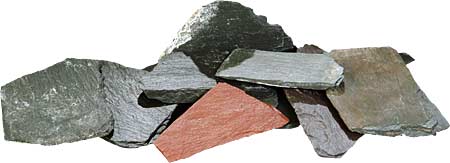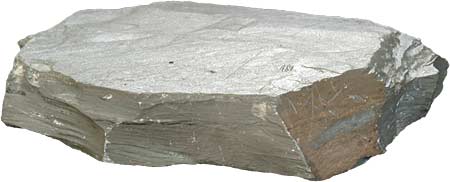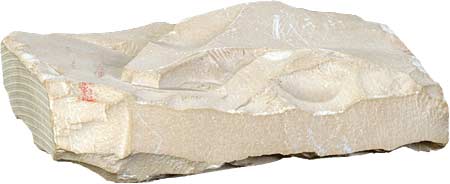Slate
Slate is a low grade metamorphic rock generally formed by the metamorphosis of mudstone / shale, or sometimes basalt, under relatively low pressure and temperature conditions. Clay minerals in the parent rock metamorphose into mica minerals ( biotote, chlorite, muscovite) which are aligned along foliation planes perpendicular to the direction of pressure. Slate is characterized by fine foliation along which it breaks to leave smooth, flat surfaces (often referred to as "slaty cleavage" - not to be confused with cleavage in minerals). Sometimes relict (original) bedding is visible on foliation planes. Slate will 'ring' when struck, unlike mudstone or shale which makes a dull 'thud'.Phyllite, a metamorphic rock very similar to slate, has undergone a slightly greater degree of metamorphism. It is slightly coarser-grained (some crystals may be visible to the naked eye), and the foliation is less perfect (it lacks perfect "slaty cleavage").

slate |
Other specimens - Click the thumbnails to enlarge 




|
Grain size - very fine-grained; crystals not visible to the naked eye.
Hardness - hard and brittle.
Colour - variable - black, shades of blue, green, red, brown and buff.
Mineralogy - contains mica minerals ( biotote, chlorite, muscovite) which typically impart a sheen on foliation surfaces; can contain cubic pyrite porphyroblasts.
Other features - smooth to touch.
Uses - historically extensively used for roof and floor tiles, and blackboards; standard material for the beds of pool / snooker / billiard tables.
New Zealand occurrences - northwest Nelson.




